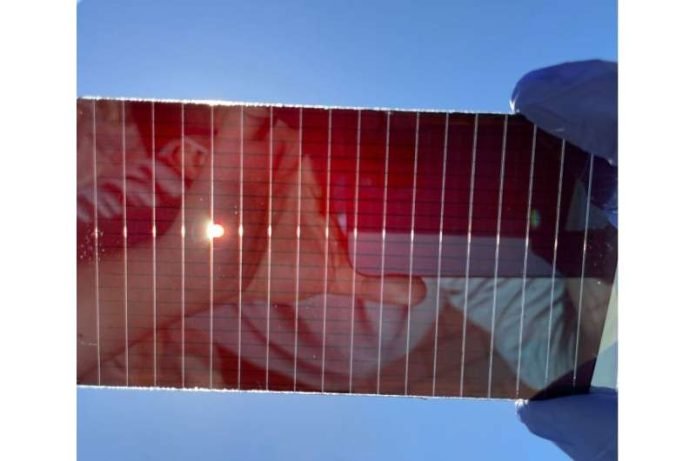
Researchers at the University of North Carolina at Chapel Hill have developed new design strategies that could enhance the efficiency and stability of bifacial perovskite solar cells.
The findings were published in Nature Energy.
Background
Perovskite solar cells, named for the calcium titanium oxide minerals or compounds with similar structures they’re based on, are considered some of the most promising emerging energy solutions.
Particularly, engineers and material scientists have been investigating the potential of small cells, known as solar mini-modules, composed of perovskite bifacial structures.
These flat structures have perovskite materials on both their front and back sides, with the former harvesting direct sunlight and the latter harvesting reflected light (albedo light).
Challenges and Goals
Despite their potential for achieving greater power conversion efficiencies (PCEs) than conventional perovskite solar cells, designing effective solar mini-modules based on perovskite bifacial structures has been challenging.
Furthermore, existing bifacial perovskite cells and modules have shown significantly lower efficiencies than their mono-facial counterparts.
“The goal of our recent work was to demonstrate perovskite bifacial minimodule with high energy yield and long operational lifetime,” said Jinsong Huang, one of the researchers involved in the study.
The New Approach
Huang and his colleagues introduced a number of strategies to optimize the design of bifacial perovskite modules.
These include a newly designed module structure and rear electrode, incorporating hydrophobic additives for improved moisture stability, and enhancing long-wavelength light absorption with embedded dielectric nanoparticles.
Using their new design, the team developed small-area bifacial perovskite solar cells that achieved a power generation density of 26.4 mW cm-2 and bifacial mini-modules that achieved a power generation density of 23 mW cm-2.
These performances surpass those of previously developed perovskite single-junction solar cells and mini-modules.
Moreover, the prototype mini-module developed by the team showed impressive operational stability, losing only 3% of its initial efficiency after working for more than 6,000 hours.
These design strategies could therefore pave the way for the large-scale production of highly efficient and stable solar energy solutions based on bifacial perovskite structures.
Looking Forward
Huang added, “We would now like to identify new strategies to continually improve the energy yield and stability of bifacial perovskite solar modules.”
The study was published in Nature Energy.
Copyright © 2023 Knowridge Science Report. All rights reserved.



